Your cat might not speak your language, but trust me, they have plenty to say. Every swish, flick, and twitch of their tail carries a message waiting to be decoded. Think of your feline friend as having their own secret semaphore system, complete with tail signals, ear positions, and eye expressions that reveal exactly how they’re feeling.
Understanding your cat’s non-verbal communication isn’t just fascinating. It’s essential for building a stronger bond and avoiding those surprise swipes or mysterious mood changes. So let’s dive into the incredible world of feline body language.
The High and Happy Tail
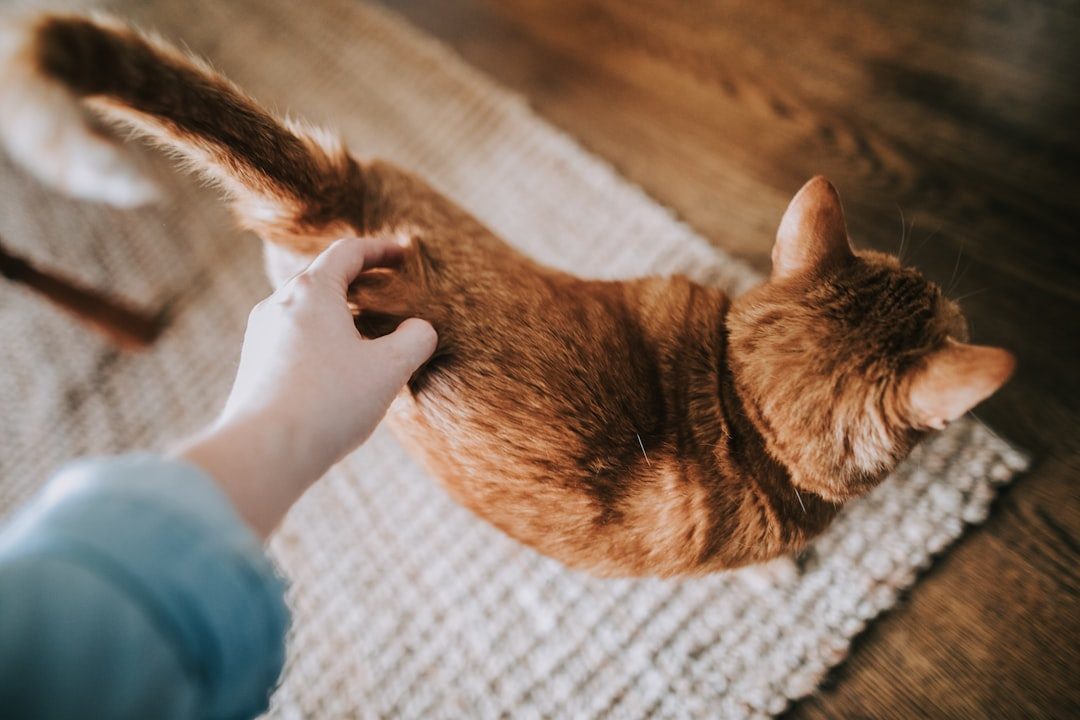
When your cat’s tail is upright, they are feeling social and confident, and are approaching in a friendly manner. This cat tail language indicates a friendly greeting between cats, and it’s how kittens greet their mothers. Picture your cat as royalty holding their flag high – that’s exactly what’s happening when they approach you with their tail standing tall.
If your cat approaches you with their tail up, they are open to an interaction. This is a good time to pet them or play with them. You’ll often notice this welcoming signal when you come home from work or when your cat wants attention. However, only pets carry their tails up. Feral and stray cats let theirs droop, making this behavior a clear sign that your cat has successfully bonded with humans.
The Question Mark Curve
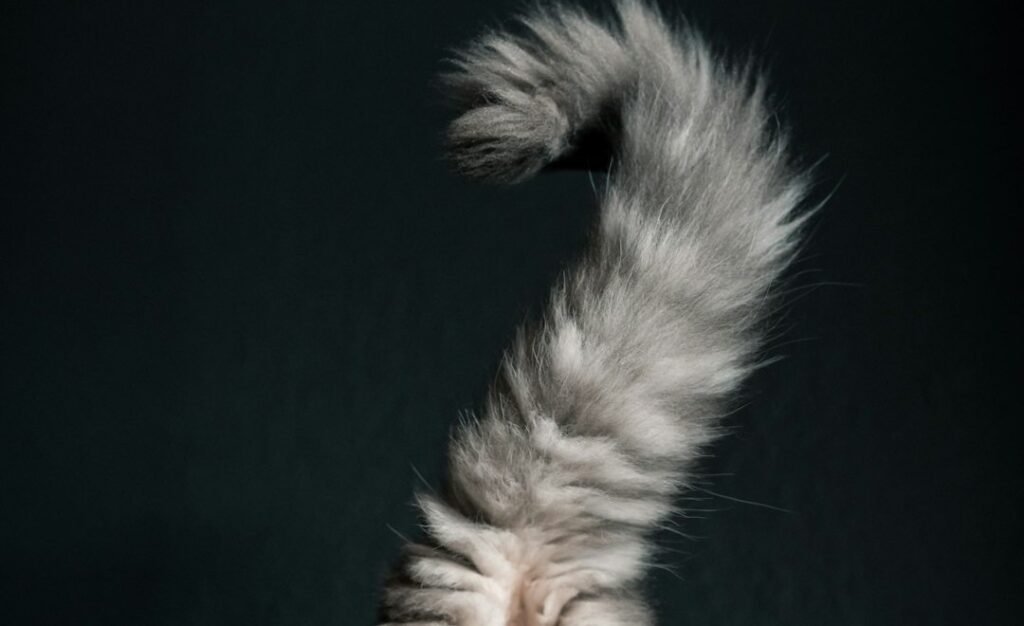
You may notice that sometimes your cat’s tail looks like a question mark – it stands upright but curls at the end. Again, this cat tail language indicates that your cat is happy and approaching amicably. This adorable little hook at the tip is like your cat adding a friendly question to their greeting – “Hey, want to hang out?”
When your cat’s tail is in this position, it means it’s an invitation to interact with your cat. A tail held high with a gentle sway from side to side could mean that your feline friend is feeling content. Sometimes, you might notice a slight curve (a bit like a question mark) at the end as it sways slowly to signal their happiness.
The Quivering Excitement

Your cat may quiver their tail when they are especially excited to see you or another cat. This tiny trembling motion is pure joy made visible – your cat literally can’t contain their happiness. It’s like their tail is vibrating with excitement, similar to how a dog might wiggle their whole body.
However, there’s one important caveat to keep in mind. Though, sometimes, when a cat quivers their tail while holding it straight up and backing up against a vertical surface, they may be urine marking. Context matters tremendously in cat communication, so observe the full situation before celebrating.
The Affectionate Wrap
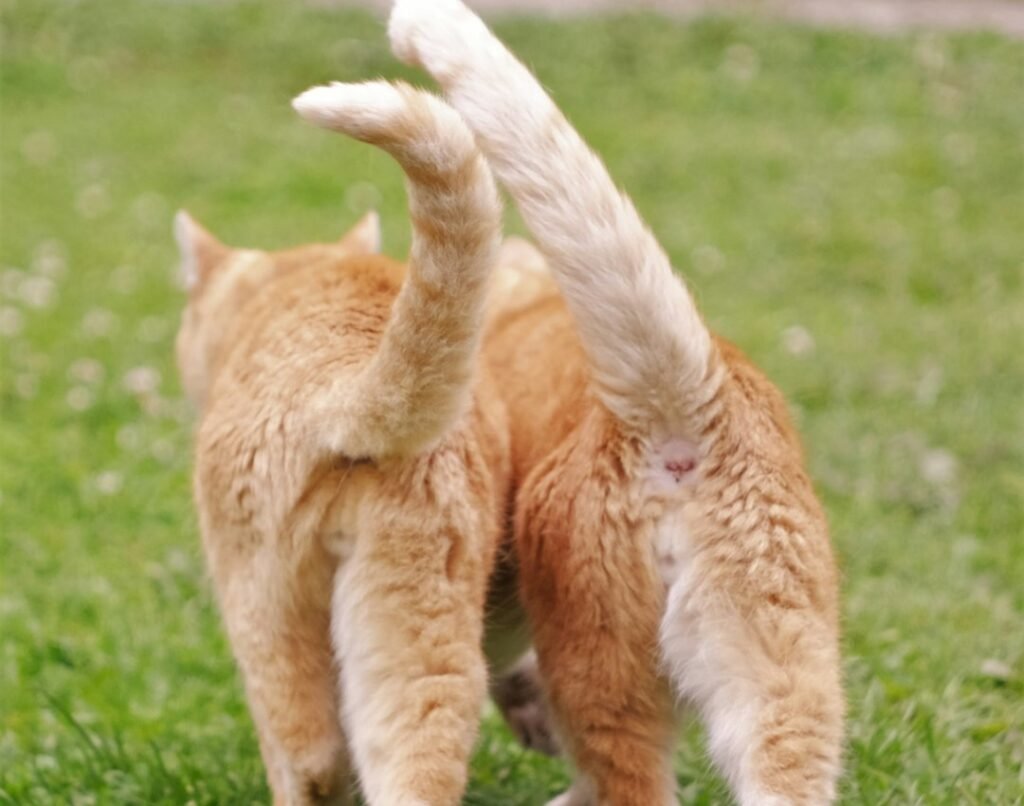
Just as we greet one another with handshakes or hugs, cats may greet by curling their tails around people and by intertwining their tails with other cats. Tail wrapping is an affiliative behavior that demonstrates a willingness to interact. When your cat wraps their tail around your leg or arm, they’re essentially giving you a feline hug.
You can liken this body language to putting your arm around someone. Cats often engage in tactile communication, whether with their owners or other felines. It’s part of their bonding. So, if your kitty wraps their tail around you, they are probably showing trust and security.
The Focused Slow Swish
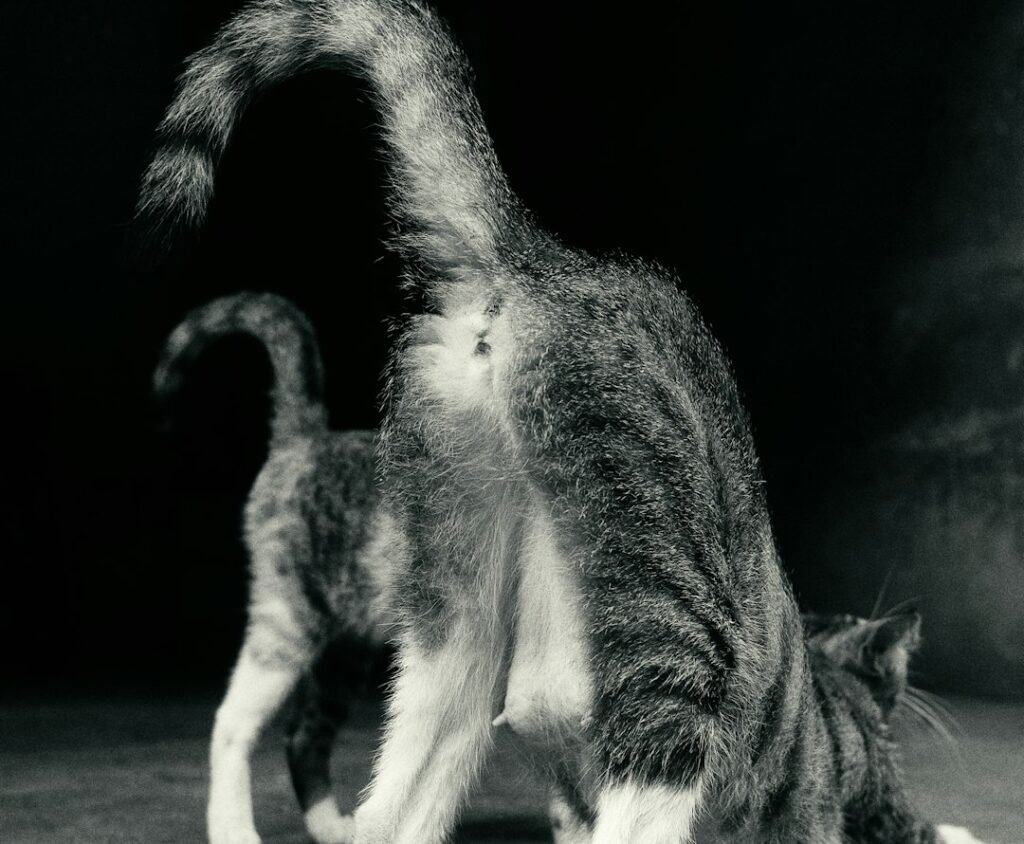
When your cat slowly swishes their tail from side to side, they may be intently focused on something like a toy, another animal in the home, or something outside. They may be about to pounce! This movement shows your cat’s hunting instincts kicking in, even if they’re just watching a dust bunny float by.
As consummate hunters, cats wag their tails when stalking prey as it helps them to stay balanced before they pounce. Whether it’s watching a bird in a tree or focusing on an unsuspecting mouse, tail swishing during hunting is a sign of concentration and is done quickly or even intermittently. Engaging in predatory behavior like stalking and pouncing is good enrichment for your cat, so let them continue to engage in whatever is captivating their attention.
The Gentle Content Sway

A soft and slow wagging is often a sign that your cat is content. The slowness means that they are at peace with the world and it’s time to chill, while the tail may also have a curved end as it gently swishes back and forth. This peaceful swaying is your cat’s version of a contented sigh.
Contentment can be the result of a delicious dinner, a pleasurable headbutt with you, or just curling up by a warm fire. Think of this gentle movement as your cat’s way of saying “Life is good right now.” Cats also “wag” their tails to tell you they are happy or angry. The slow and soft wag means they are enjoying your pets and feeling happy.
The Thrashing Warning
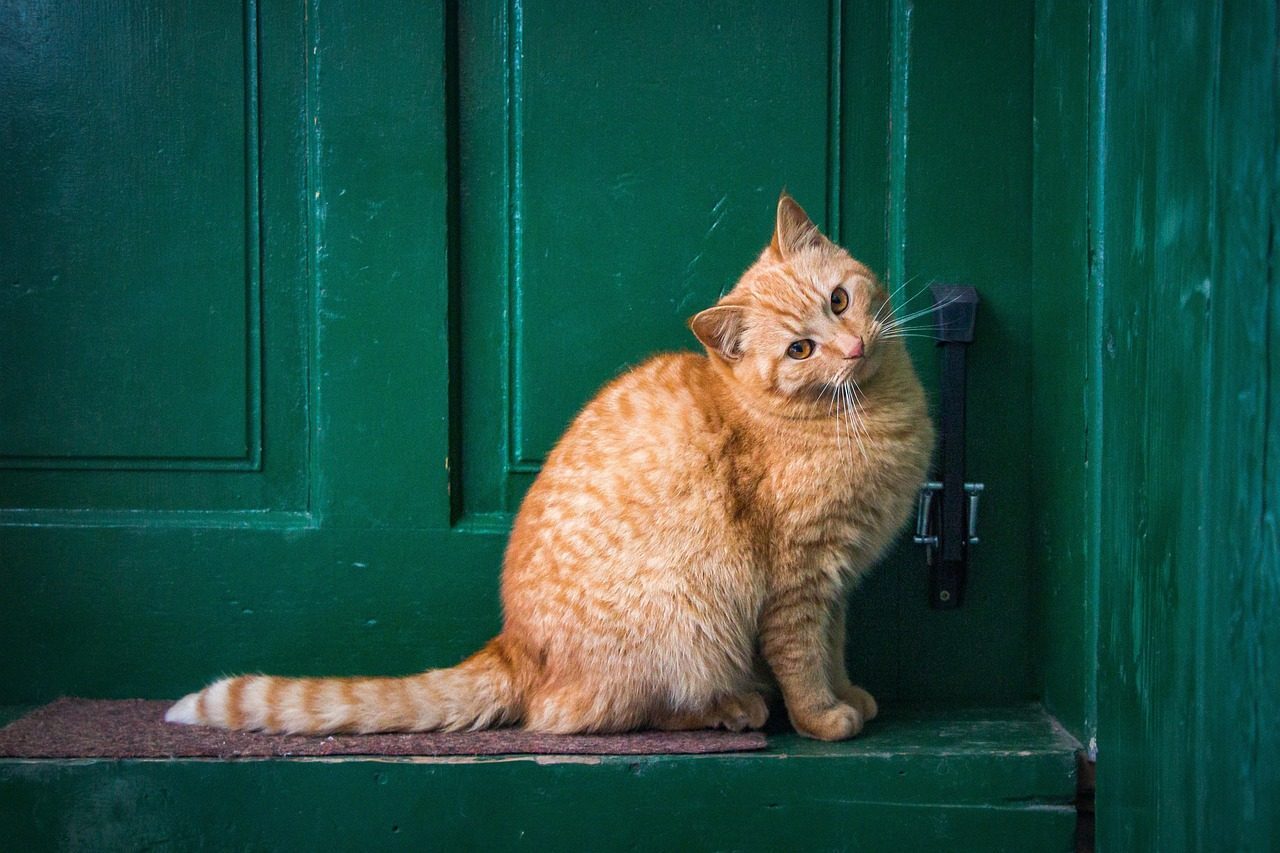
When your cat thrashes their tail or is thumping it on the ground, they are irritated, annoyed, or angry. This tells you that something is bothering your cat. This aggressive tail movement is your cat’s equivalent of someone drumming their fingers impatiently or tapping their foot.
A rapidly swishing tail can indicate annoyance, a sign the cat wants to be left alone. However, if that tail begins wagging faster and more aggressively, almost like a thrash, then that means the cat is getting irritated and you should stop petting (or whatever it is you’re doing). Whipping or lashing of the tail is a sign that at cat is angry, and that they may take a sudden, strong action in the near future. If a cat does this, it’s time to take a step backwards to give the cat some space. If you don’t, you may risk being bitten or scratched.
The Uncertain Ambivalent Wag
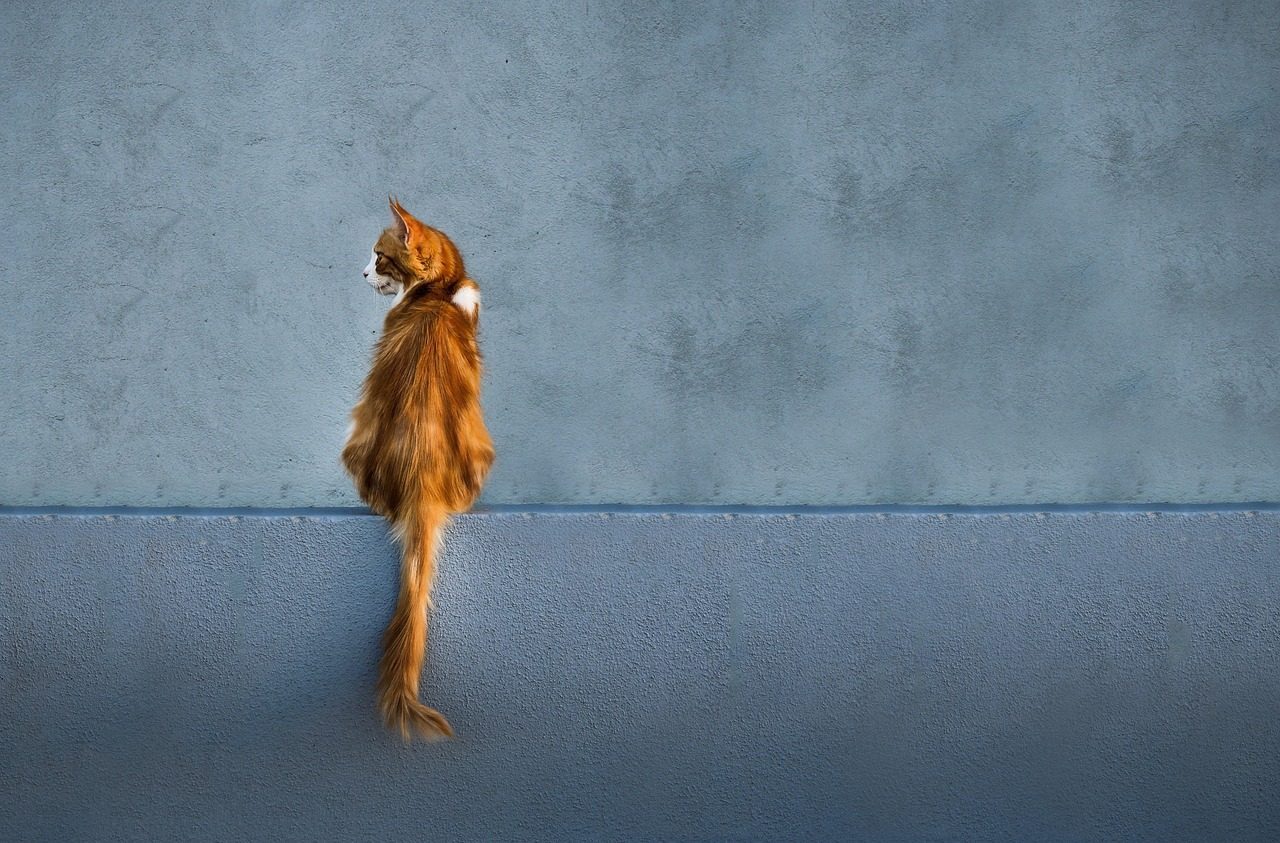
A wagging tail means that the cat is ambivalent: they are pausing for thought, not sure about what to do next. When a cat wags their tail (moving the tail rhythmically from side to side), they are expressing ambivalence about what to do. If they could talk, they would be saying “I am not sure about this”.
This indecisive tail movement often happens when your cat encounters something new or uncertain. Tail slowly wagging from side to side. This means your cat is feeling indecisive or getting ready to pounce on something. Your cat might display this behavior when meeting a new person or investigating an unfamiliar object – they’re essentially buying themselves time to assess the situation.
The Dreaming Twitch
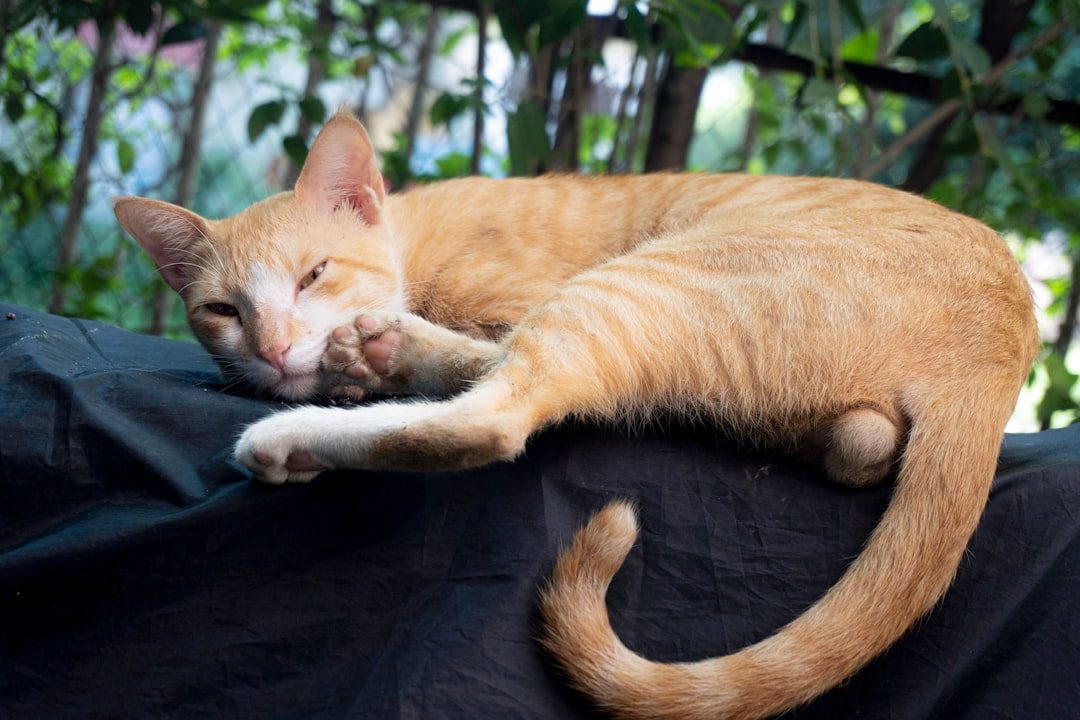
A cat that gently wags or thumps its tail while it’s asleep is likely to be dreaming of what happened that day. Perhaps they are thinking about hunting a bird, eating a delicious dinner or even being stroked by their human family. Just like humans move during dreams, cats can’t help but act out their dream adventures.
Cat behaviourists such as Dr MIkel Delgado, have revealed that like other mammals with similar brain structures, cats experience REM sleep (the deepest sleep stage) when most dreams occur, and just like us, they may be having nightmares too! So that little tail movement might be your cat chasing mice or escaping from the vacuum cleaner in their dreams.
Ears Forward: Alert and Confident
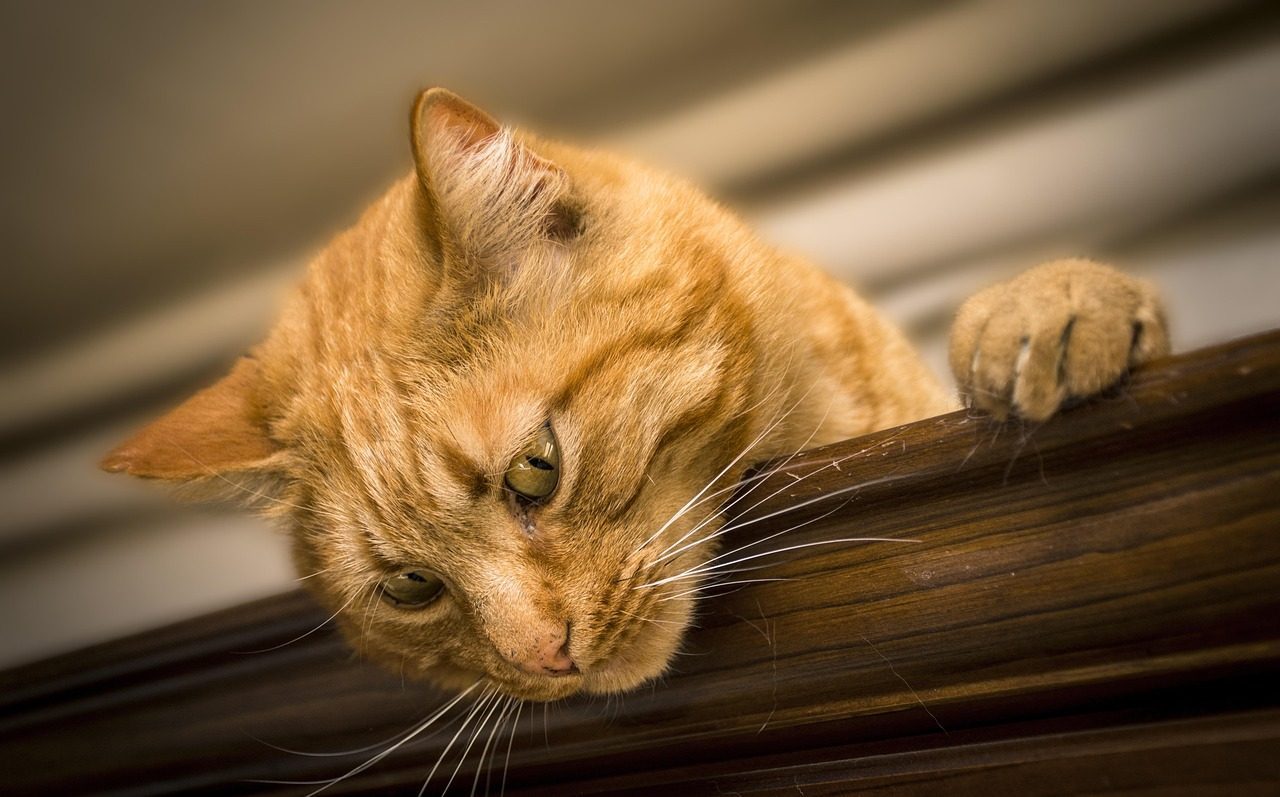
Understanding their eye cues can significantly improve human-cat interactions. Eyelids: Wide-open eyes may indicate fear, interest, excitement, or aggression, while half-closed or drooping eyes convey relaxation and friendliness. Ears facing forward indicate relaxation and alertness. When your cat’s ears are pointing forward, they’re essentially putting their best foot forward.
Ears facing forward can be seen in cats who are feeling happy and confident, it is the neutral position for a cat’s ears. This is the position you’ll see most often when your cat is simply going about their day, feeling secure and content in their environment.
Ears Flattened: Fear or Aggression

Flat back ears: An uncommon but important signal to know, flat back ears indicate extreme fear and readiness to attack. In this defensive posture, do not approach the cat, as it may perceive any advances as a threat. When a cat’s ears are pressed flat against their head, they’re sending a clear message to back off.
If the ears are flattened it can show a cat is anxious or frightened. Their ears will be turned back or flat against their head and their whiskers might be flat against their cheeks or pushed forward. This defensive position means your cat feels cornered or threatened, and it’s best to give them space until they calm down.
Eyes: The Windows to Your Cat’s Soul
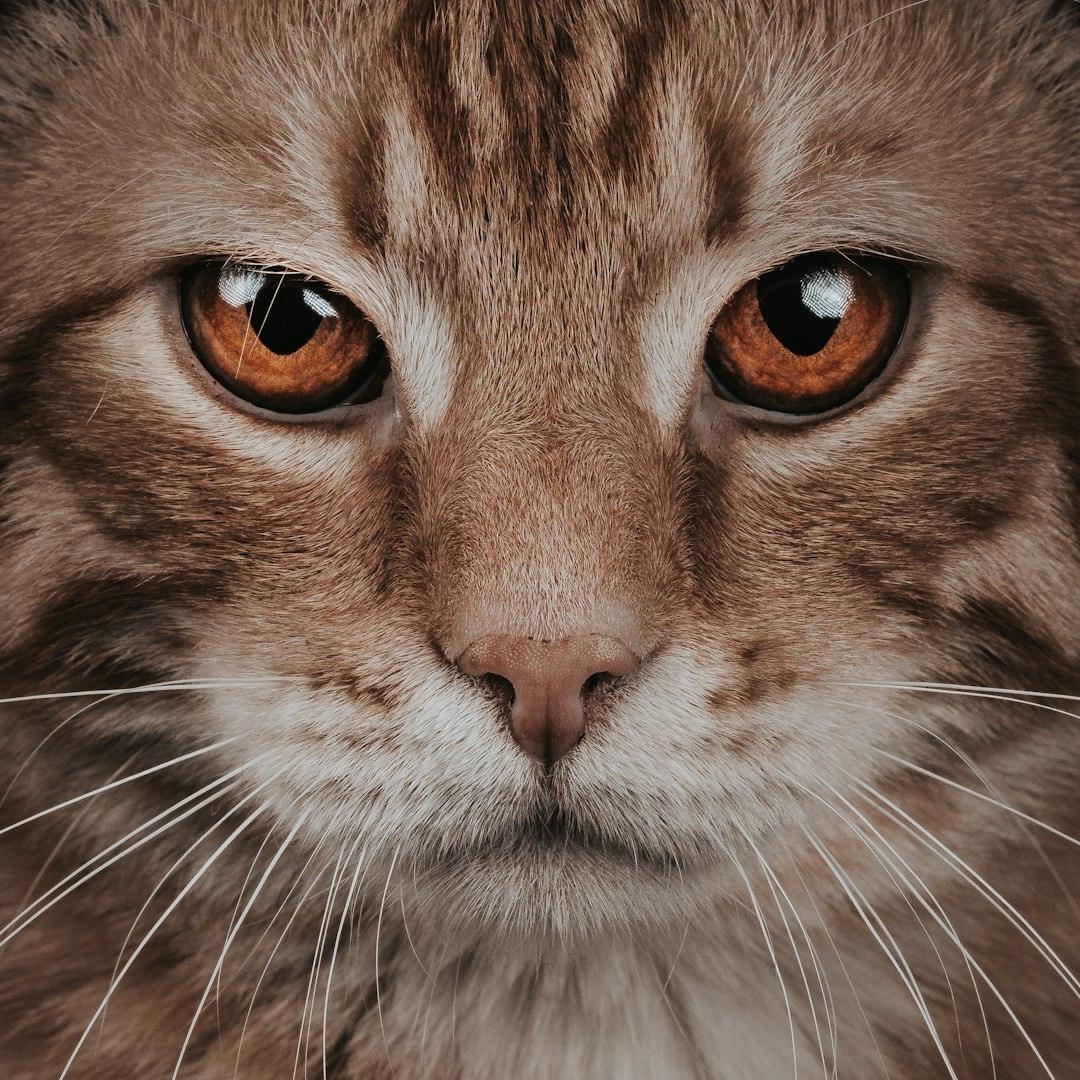
Slow blinking is a sign of trust and comfort, and reciprocating the gesture can reinforce the feeling of safety. Your cat may blink slowly to show trust and affection. In fact, studies suggest that this behaviour releases oxytocin, a hormone associated with bonding. Responding to your cat with a slow blink can strengthen the bond between you.
Eye Contact: Direct eye contact in cats is often associated with asserting dominance, feeling threatened, or preparing to pounce. Avoid making prolonged, direct eye contact, especially with unfamiliar cats, as it can lead to tension and discomfort. However, soft eye contact combined with slow blinking creates a completely different message of trust and affection.
Whiskers: Mood Indicators
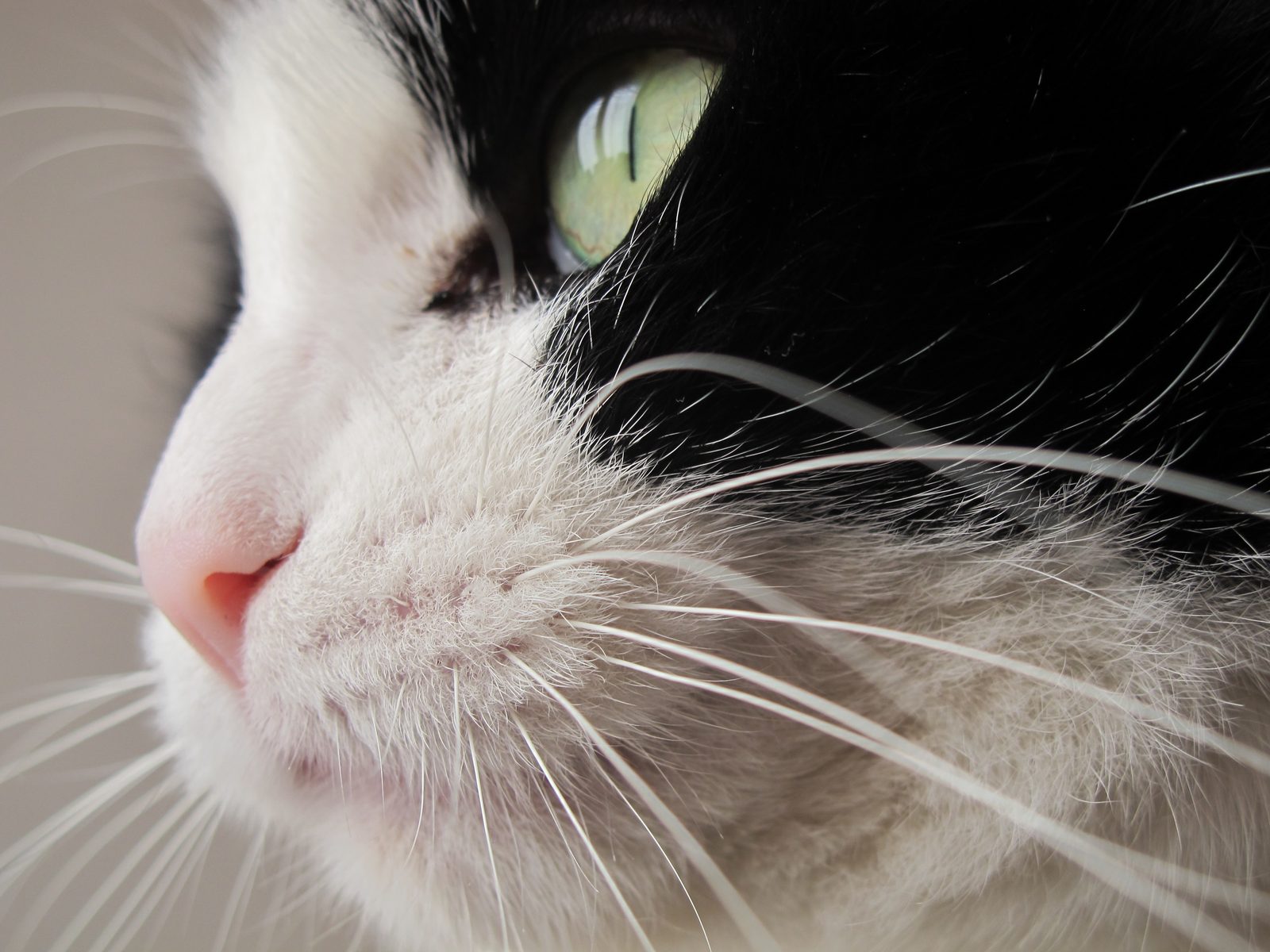
Whiskers are highly sensitive tactile hairs, or vibrissae, that provide spatial awareness. When a cat’s whiskers are pulled back, it often indicates stress or defensive behaviour, while whiskers pointing forward signify curiosity and readiness to explore. Think of whiskers as your cat’s emotional barometer – they move with your cat’s feelings.
In fearful situations, whiskers are held back against the face to indicate that the cat is non-threatening. Moreover, during a potential conflict, the whiskers are tilted backward. If the whiskers are tight against the face, the cat is communicating fear and/or aggression. Forward-facing whiskers, however, show curiosity and confidence.
Pupil Dilation: Intensity Gauge

A fearful cat’s eyes widen, and their pupils dilate due to the effects of the fight-or-flight response. When a cat’s pupils are dilated, large black center, the message is only that the cat is stimulated; this could mean stimulated to play or stimulated in fear or aggression. Dilated pupils don’t tell the whole story alone – you need to read the entire situation.
In cases other than as a reaction to reduced light indicates aggression, excitement, pain or apprehension- basically any type of arousal. The signal, therefore, is very unclear and careful reading of the entire body language should be helpful. They will also enlarge their pupils when they are angry or afraid. For example, if you are petting a cat and their eyes start out slit-like and then very quickly turn big and round then stop petting them and assess the situation.
Body Posture: The Complete Picture
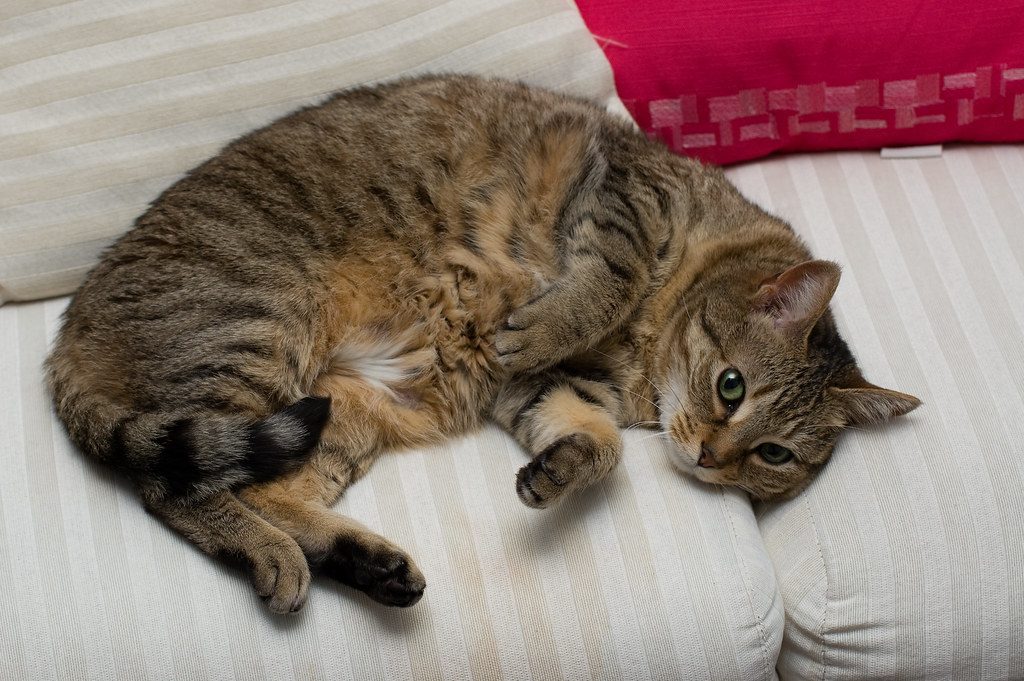
A cat lying on their back, exposing their belly, is in a relaxed state, indicating trust. This posture activates the ventral vagal pathway, associated with social engagement. However, here’s the twist that surprises many cat parents: Despite this, many cats will not want their tummy rubbed! The hair follicles there are very hypersensitive to touch, and your cat may bite or scratch if you touch their tummy.
Rolled over and exposing the belly is a social greeting and sign that a cat trusts you. However, it’s not an invitation to touch their tummy, as many cats find that stressful. A gentle stroke on the head or waiting until they stand up and approach you are better options. Understanding this distinction can save you from getting scratched while still appreciating your cat’s trust display.
Conclusion
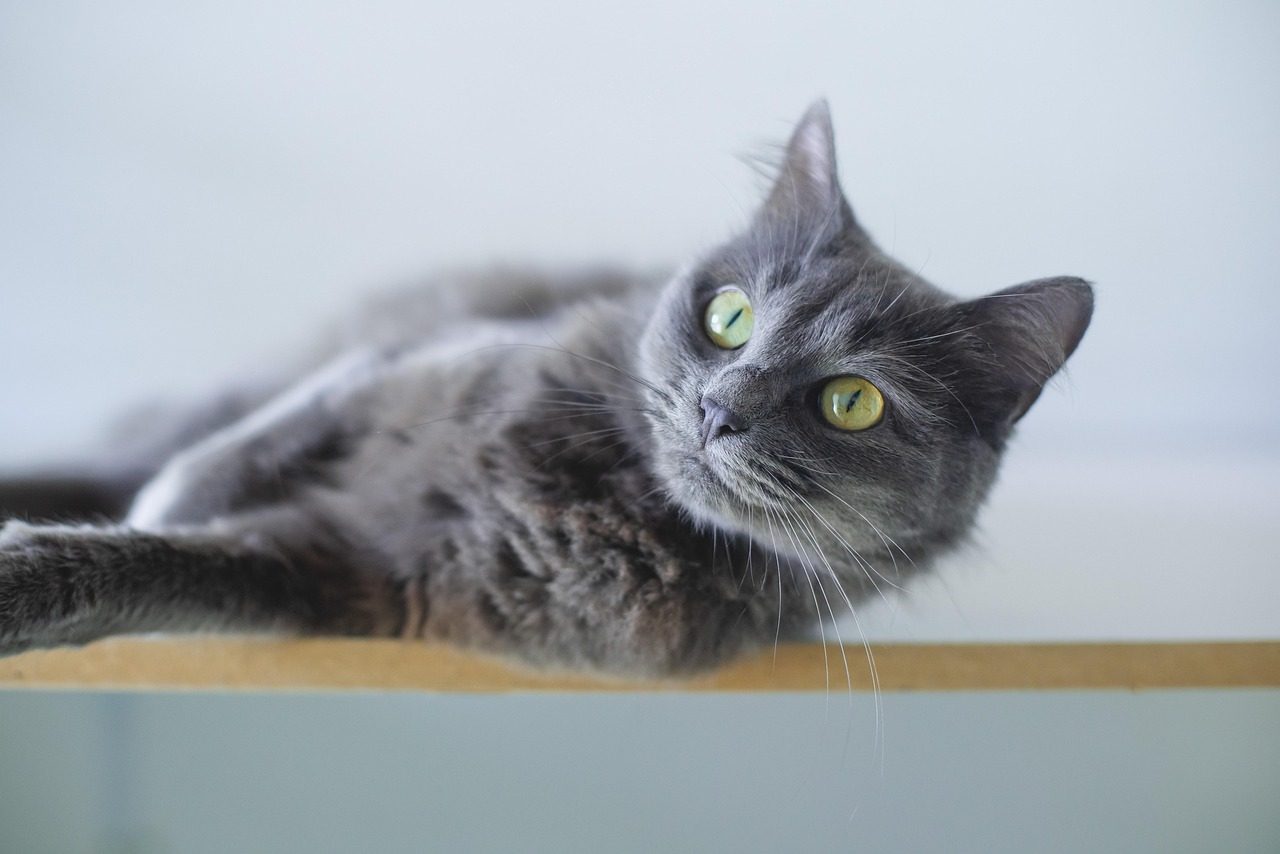
Reading your cat’s body language opens up an entirely new dimension of communication between you and your feline friend. From the confident high tail to the warning thrash, from forward-facing ears to dilated pupils, every signal serves a purpose in your cat’s complex communication system.
Remember that context is everything when interpreting these signals. A twitching tail during play means something completely different from a twitching tail during a vet visit. The more you observe and understand these subtle cues, the stronger your bond with your cat becomes. What do you think about your cat’s latest tail message? Tell us in the comments.





